
In 2023, we mourned the loss of a number of groundbreaking directors, visionary actors, and generational musicians who made an indelible impact on pop culture during their time on Earth. From Norman Lear to William Friedkin, from Matthew Perry to Paul Reubens, from Tina Turner to Tony Bennett, The A.V. Club pays tribute to all of the these talented artists and their many contributions.
2 / 72
Jeremiah Green
Jeremiah Green
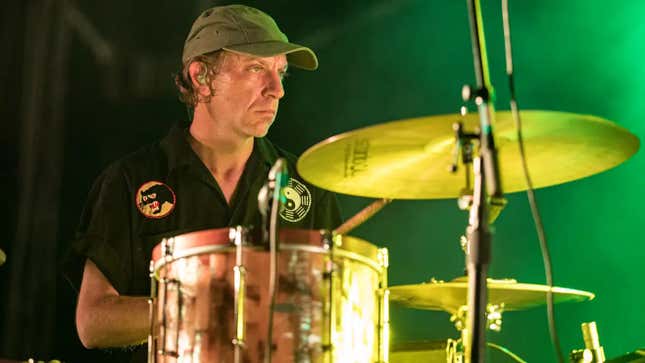
Jeremiah Green, the drummer for Modest Mouse and a founding member of the band, has died. He was 45.
Green was just a teenager when he first joined up with Modest Mouse frontman Isaac Brock and bassist Eric Brock. The trio got their start in Washington in the 1990s, releasing their cult favorite debut album, This Is A Long Drive For Someone With Nothing To Think About, in 1996. [Hattie Lindert]
3 / 72
Earl Boen
Earl Boen
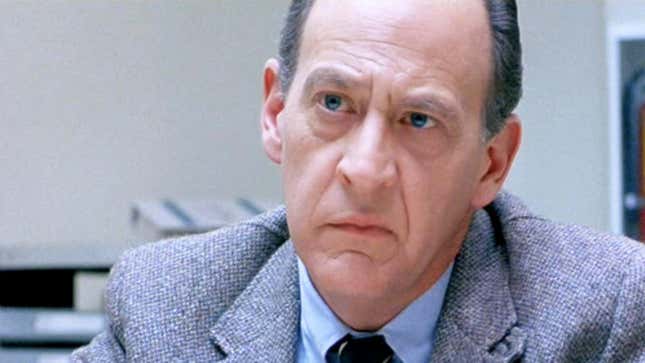
A veteran character and voice actor, Boen will be most familiar to film audiences for his role in the first three Terminator films, playing the endlessly tormented Dr. Peter Silberman in The Terminator, T2: Judgment Day, and Terminator 3: Rise Of The Machines. With a track record spanning sitcoms, dramas, video games, action movies, and pretty much anything else an actor might’ve put his talents toward in the second half of the 20th century, Boen accrued almost 300 credited roles across a 40-plus year career. Per Variety, he died in Hawaii, after being diagnosed with stage four lung cancer last year. Boen was 81.
Boen made his name first and foremost in TV comedy: His early resumé, from the mid-’70s onward, is dotted with many of the biggest sitcoms of the era, including MASH, Three’s Company, Barnaby Jones, and more. Even as a young man, Boen’s hangdog face and gift for the dour made him a regular presence on shows looking to inject a little wry, glum wit into their ensembles for an episode; although he occasionally settled into a longer role (including a single-season stint on It’s A Living in 1981), Boen would remain a “freelancer” for most of his career. [William Hughes]
4 / 72
Adam Rich
Adam Rich
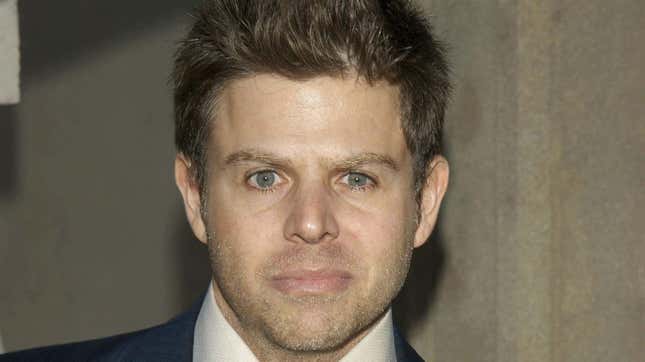
Best known for his role on ABC’s Eight Is Enough, Adam Rich also made appearances on other television series throughout the ’80s and ’90s, including The Love Boat, The Six Million Dollar Man, St. Elsewhere, and Baywatch. His last major role occurred in 2003, when he played himself in the David Spade comedy Dickie Roberts: Former Child Star.
Rich suffered from addiction issues that contributed to legal trouble over the years, including an arrest in 1991 for attempting to break into a pharmacy, per the AP. He was open about his experiences with mental illness; publicist Danny Deraney told the outlet that the actor’s depression “defied treatment.”
“Adam was simply a wonderful guy. He was kind, generous and a warrior in the fight against mental illness,” Deraney shared in a statement posted to Twitter. “Adam did not have an ounce of ego. He was unselfish and always looked out for those he cared about. Which is why many people who grew up with him feel a part of their childhood gone, and sad today. He really was Americas Little Brother.” [Mary Kate Carr]
5 / 72
Jeff Beck
Jeff Beck

A Grammy winning-guitarist, credited with refining and popularizing the sound of the electric guitar in modern rock music, Jeff Beck had early success with British band The Yardbirds in the 1960s before embarking on a long and winding solo career. Although he never reached the mainstream or commercial heights of many of his contemporaries and successors—most of whom acknowledged him as a massive influence on their own work—Beck continued to tour, play, and perform well into the 2020s, with his list of collaborators encompassing a handy Who’s Who of the entire span of modern rock. Beck died reportedly of bacterial meningitis. Per Variety, he was 78.
Born in England in the 1940s, Beck gravitated toward music early, building his own guitars as a teenager, and beginning to play with bands while in college in the early ’60s. Like many of the budding rock guitarists of the era, Beck was drawn to the sounds of rhythm and blues, transforming and playing with those sounds to create the foundations of rock music. In 1965, after Eric Clapton departed The Yardbirds, Beck signed on to replace him as the band’s lead guitarist.
Beck’s tenure with the band was relatively short—just 20 months, before he quit and/or was fired after bailing on the group in the midst of a U.S. tour—but highly influential. The Yardbirds had many of their biggest hits during that period; meanwhile, Beck’s experimentation with adding fuzzier, more distorted tones to his guitar paved the way to the creation of more psychedelic rock. Beck only made one album with The Yardbirds, 1966's Roger The Engineer, before going solo in 1967. [William Hughes]
6 / 72
Lisa Marie Presley
Lisa Marie Presley
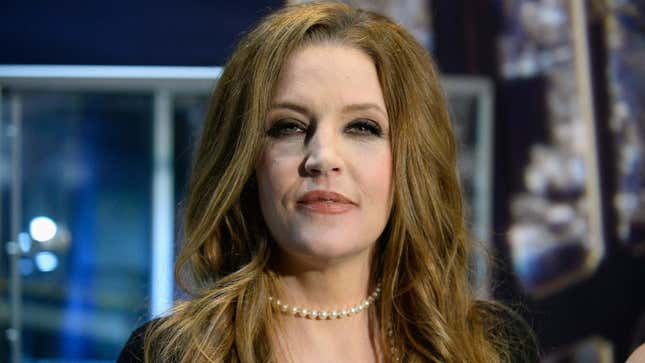
The only daughter of Elvis and Priscilla Presley, Lisa Marie was born on February 1, 1968, in Memphis, Tennessee. Her father being the King of Rock ’n Roll, her childhood was a whirlwind. He and Priscilla divorced when she was four, and Lisa Marie moved with her mother to Los Angeles. She split her time between L.A. and Memphis until her father’s death in 1977.
Her father’s death was the beginning of a tumultuous adolescence. She dropped out of high school and began abusing drugs, winding up in Scientology’s Celebrity Center rehab facility when she was 17. While in rehab, she met her first husband, musician Danny Keough. The couple were married in 1988 and had two children, Riley and Benjamin, before divorcing in 1994. [Matt Schimkowitz]
7 / 72
Gina Lollobrigida
Gina Lollobrigida
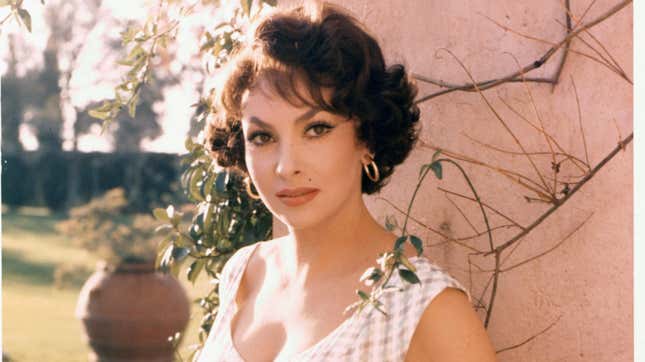
Gina Lollabrigida made her English language debut in 1953 with John Ford’s Beat The Devil, but she had already made over 20 films in Eurore before arriving stateside, per The New York Times. Lollabrigida went on to make a significant impact on the U.S. film indurstry in the 1950s and 60s, starring in films like Trapeze, The Hunchback of Notre Dame, and Come September and even earning a parody on The Flintsones. While she was a big star in the States, she remained an icon in her native Italy through her entire life.
In the 1970s, she embarked on a career behind the camera, publishing a book of photographs titled Italia Mia in 1973. In 1975, her interview with Cuban leader Fidel Castro was screened in Berlin as part of the documentary Ritratto di Fidel. Her final film appearance was in the French comedy XXL in 1997. [Drew Gillis]
8 / 72
David Crosby
David Crosby
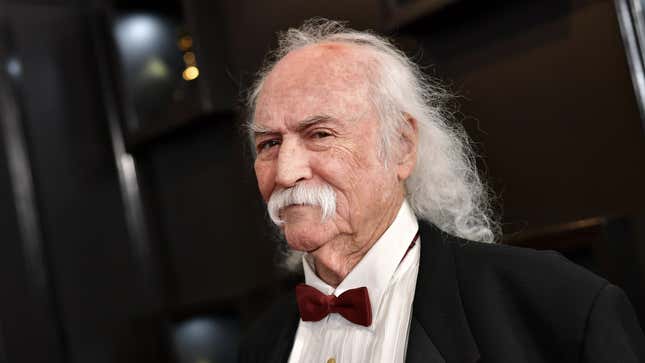
Although he continued to play with CSN&Y—when they weren’t screaming at each other—and had a successful and prolific solo career, Crosby’s later years were occupied both by health problems, and by his apparently instinctive cultivation of his status as an elder statesman of the weird, loud folk-rock lifestyle. (There was a certain, “Oh, yeah, that makes sense” vibe to it all when Melissa Etheridge announced that she’d chosen Crosby to be the sperm donor for her and her partner’s artificial insemination; he was, not surprisingly, a natural on Twitter.) In later years, he also mellowed: In 2019, Cameron Crowe—who’d been talking with Crosby, at various points in his life, since 1974—released David Crosby: Remember My Name, a retrospective documentary about his life. Directed by A.J. Eaton, the film drew strong reviews for its vision of the aging Crosby as he reflected on his failures, his music, and his life—all of which, it seems, were inextricably intertwined. [William Hughes]
9 / 72
Lloyd Morrisett
Lloyd Morrisett
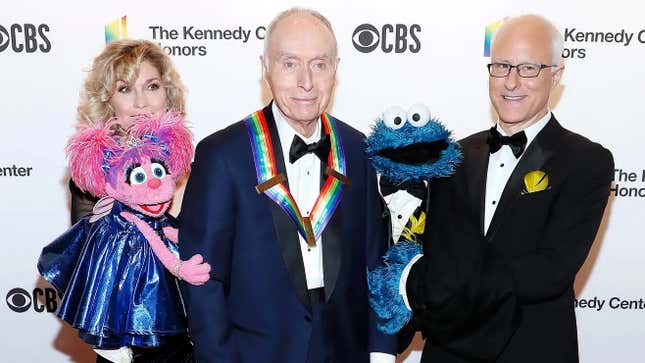
In 1968, Morrisett and Ganz founded the Children’s Television Workshop, which would later be renamed the Sesame Street Workshop, using the newly established National Educational Television, later renamed the Public Broadcasting Service or PBS, and a number of grants. The show aimed to break “the tyranny of America’s poverty cycle could be broken if the emotional, social, health, nutritional and psychological needs of poor children could be met,” writes Michael Davis in Street Gang, and that’s precisely what happened. The show launched on November 10, 1969, creating a seismic moment in television, with aftershocks felt to this day. [Matt Schimkowitz]
10 / 72
Lance Kerwin
Lance Kerwin
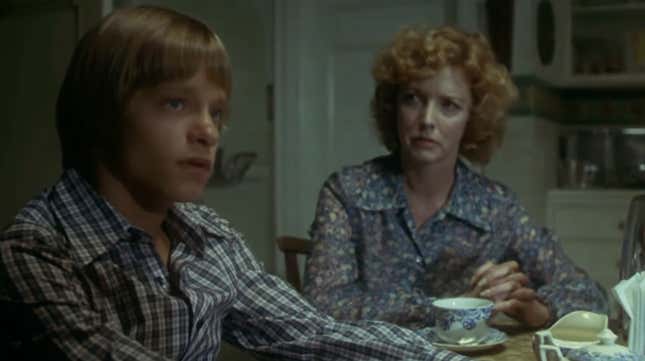
Kerwin rose to fame as a young actor in the 1970s, becoming a teen heartthrob for his starring role on James At 15 (later, James At 16) in 1977. The show was controversial in its time, garnering criticism for its depiction of James losing his virginity and having premarital sex (per Variety). He went on to appear in the 1979 adaptation of Salem’s Lot under director Tobe Hopper, whom he described in a 2019 interview as on a “whole different level from most directors I had worked with.” He continued to work steadily throughout the ’80s and early a’90s, appearing in shows like Trapper John, M.D., Murder, She Wrote, and Shelley Duvall’s Faerie Tale Theatre. Later, he became a youth pastor in California and Hawaii. [Mary Kate Carr]
11 / 72
Tom Verlaine
Tom Verlaine

As the singer, songwriter, and guitar player for influential New York band Television, Verlaine shaped the sound of rock and punk music in the 1970s and beyond, applying a poetic flair (and serious musicianship) to the rougher edges of the wider movement. After Television broke up in 1978, Verlaine embarked on an extensive solo career that saw him release ten albums across the ensuing decades, exploring a variety of musical themes that generally get tossed together under the label “post-punk.” Per Variety, Verlaine died on Saturday after what’s been reported as a “brief illness.” He was 73. [William Hughes]
12 / 72
Annie Wersching
Annie Wersching

Perhaps best known for her role on 24, where she played FBI Special Agent Renee Walker for two seasons, Wersching was a prolific actor, appearing in some of television’s most popular shows, including NCIS, Bosch, and CSI. She returned to 24 for the 2013 reunion season. However, she wasn’t limited to action. Wersching did 80 episodes of General Hospital, appeared as a recurring character on Vampire Diaries, and starred in Marvel’s Runaways. The actor’s voice can also be heard as the smuggler Tess in The Last Of Us. “We just lost a beautiful artist and human being,” Last Of Us co-creator Neil Druckmann wrote on Twitter. “My heart is shattered. Thoughts are with her loved ones.” [Matt Schimkowitz]
13 / 72
Lisa Loring
Lisa Loring
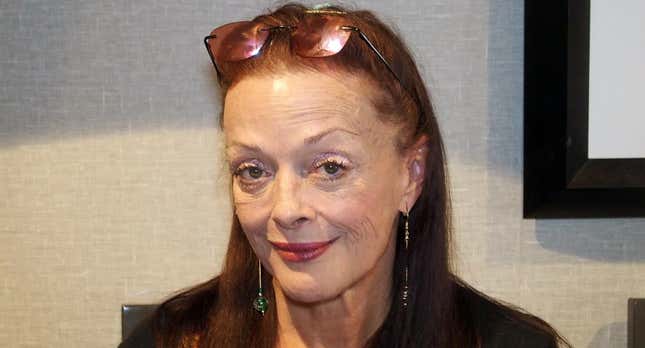
The first-ever portrayer of the pigtailed menace, Loring took on the role of Wednesday Addams in 1964, when she was just six years old, and remained a cast member for the show’s entire duration, until 1966. Loring’s take on the character first outlined in Charles Addams’ cartoons for The New Yorker helped set the tone for future Wednesdays, including Christina Ricci and Jenna Ortega. Last month during an appearance on The Tonight Show, Ortega directly cited Loring as an inspiration for the viral dance Wednesday performs in Tim Burton’s recent Netflix series. [Hattie Lindert]
14 / 72
Cindy Williams
Cindy Williams

Williams worked with Penny Marshall, her future sitcom co-star, at Francis Ford Coppola’s American Zoetrope (which produced American Graffiti) as a writer. That’s what they were reportedly doing when they got a call from Marshall’s brother, Garry Marshall, who wanted them both to appear on an episode of a show he was producing called Happy Days. Their appearance, as prospective dates for Richie and Fonzie who worked at a brewery in Milwaukee, was so popular with viewers that Garry Marshall put together a pitch for a spin-off.
Laverne & Shirley premiered in 1976 and starred Williams as the more reserved Shirley against Marshall’s free-spirited Laverne. It was the most-watched show on TV in its third season, and it ran until 1982. Williams left early on in what would become its final season, choosing to leave so she could give birth to her first child (something the producers reportedly fought her on, weirdly). [Sam Barsanti]
15 / 72
Melinda Dillon
Melinda Dillon

But, as we said: It’s hard to call any role of Dillon’s more enduring than A Christmas Story. As the mother to Peter Billingsley’s Ralphie, Dillon embodies a quintessential movie mom, but in a way that allowed her gifts as a comedian and dramatic actress to shine through. (The joy she brings to the moment when Mother Parker encourages her reluctant youngest son to eat from his plate like “a little piggy” is an especial highlight.) There are many reasons A Christmas Story has remained in near-permanent holiday rotation for the last 40 years; the authenticity and delight Dillon brought to the part is undeniably one of them. [William Hughes]
16 / 72
Burt Bacharach
Burt Bacharach
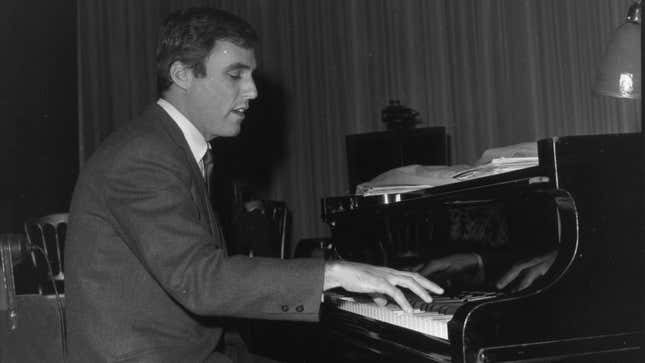
Known for his masterful ability to capture a buoyant romanticism in his smooth and sophisticated melodies, Burt Bacharach’s sound became integral to the careers of countless seminal artists. An eight-time Grammy winner, Bacharach penned hits for Aretha Franklin, Dionne Warwick, Neil Diamond, Dr. Dre, Sheryl Crow, and many more during his life. Artists like Elvis Presley, the Beatles, Cyndi Lauper, and Frank Sinatra covered his compositions; the White Stripes, Twista and Ashanti all sampled his work in later years. Even early on in his time in music, he served as an arranger and conductor for Marlene Dietrich, traveling with her throughout the ‘50s and ‘60s. [Hattie Lindert]
17 / 72
Hugh Hudson
Hugh Hudson
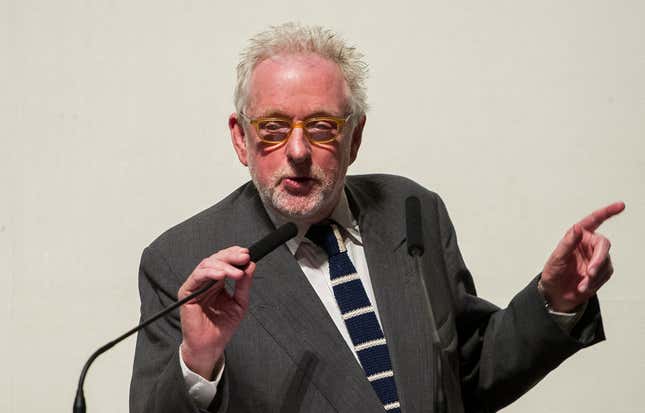
In 1981, Hudson returned to filmmaking in full, directing his first full-length documentary, racing doc Fangio: Una vita a 300 all’ora. He followed that dip into sports with another, even more celebrated one: Chariots Of Fire, a historical drama focused on a pair of British track runners competing in the 1924 Olympic Games. Directing from a script by Colin Welland—and employing a secret weapon in the form of an instant-classic synth-heavy soundtrack from his friend and colleague Vangelis—Hudson was heralded for making a relatable, funny, and very human film out of the story of runners Harold Abrahams (Ben Cross) and Eric Liddell (Ian Charleson). The film was a crossover international success, ultimately scoring Hudson a Best Director nomination at the Academy Awards, and winning for Best Picture, Best Original Screenplay, Best Costume Design, and Best Original Score. [William Hughes]
18 / 72
Trugoy The Dove
Trugoy The Dove
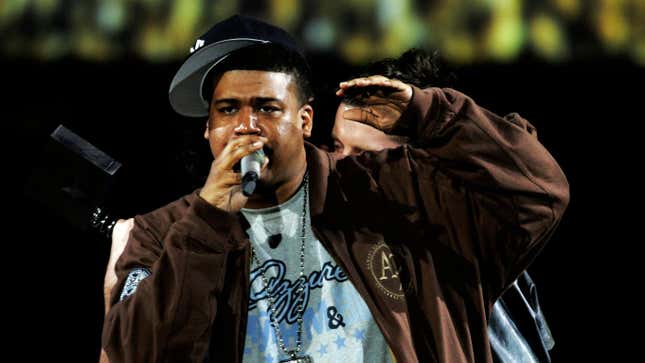
Trugoy (who explained that he took his stage name from the fact that he likes to eat yogurt) attended high school in Long Island with Vincent Mason and Kelvin Mercer, a.k.a. Maseo and Posdnuos, the other two members of De La Soul, and together they released their groundbreaking debut album 3 Feet High And Rising in 1989. The extremely influential album, which introduced the group’s penchant for clever lyrics and surprising samples, was De La Soul’s biggest hit, but they continued releasing critically acclaimed albums that shook up their usual style over the course of the next decade or so. [Sam Barsanti]
19 / 72
Raquel Welch
Raquel Welch
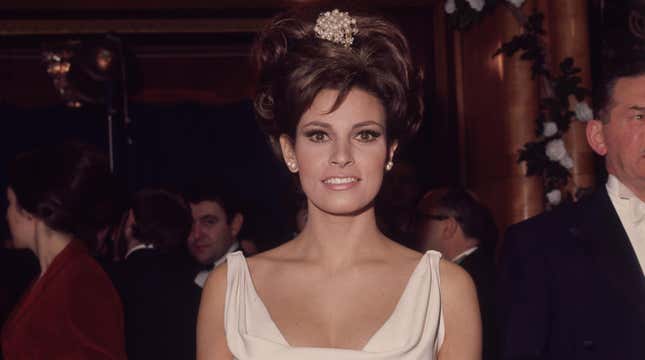
Born Jo Raquel Tejada on September 5, 1940, in Chicago, Illinois, Raquel Welch started her career on the theater stage, eventually earning her first on-screen job as a weather broadcaster. She married her high school sweetheart, James Welch, and they remained married for five years until 1964.
When she returned to Los Angeles in 1963, she began auditioning for Hollywood studio roles. Her big breakthrough came in 1966 when she starred in the sci-fi hit Fantastic Voyage. In the same year, she snagged the role in One Million Years B.C.
“Both made a huge difference to my career. Overnight, I found myself in demand,” she told The Sunday Post
20 / 72
Gerald Fried
Gerald Fried
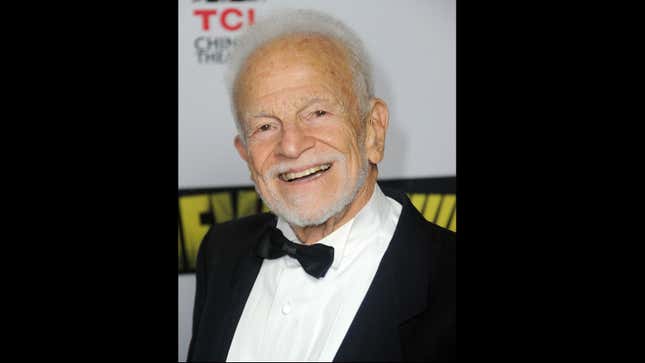
Gerald Fried has died. A veteran musician and long-time Hollywood composer, Fried contributed work to dozens of films, as well as some of the defining TV shows of the 1960s and ’70s and beyond, including scores for Roots, Star Trek, and Gilligan’s Island. Although his work was sometimes overshadowed by the frequently flashier theme songs for the projects he worked on, many of his songs would eventually reach legendary status—most notably his horn-heavy, trilling score from the Star Trek episode “Amok Time,” essentially the iconic theme music for a good old-fashioned sci-fi fight scene. Per Variety, Fried died this week of pneumonia. He was 93. [William Hughes]
21 / 72
Richard Belzer
Richard Belzer
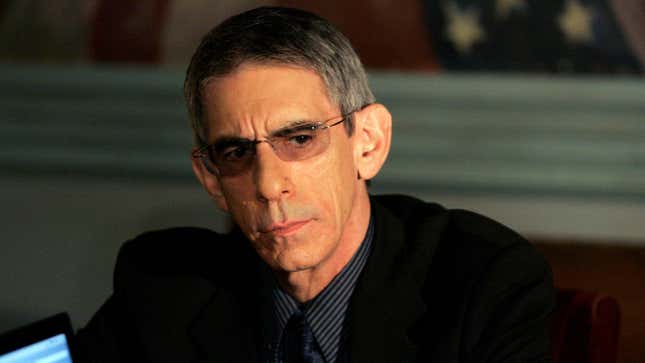
Richard Belzer, the stand-up known for his lanky frame and dark glasses who became a one-man cinematic universe (or whatever the equivalent TV terminology would be) thanks to his many appearances as John Munch, has died. Belzer introduced the iconic cop on NBC’s Homicide: Life On The Street, but he became an iconic pop culture figure when he transitioned over to Law & Order spin-off Special Victims Unit—opening the door for Munch to appear on several other shows, plus the times Belzer played overtly Munch-like characters without literally playing the same guy. Belzer was 78.
Belzer was born in Connecticut in 1944 and worked various jobs before moving to New York in the ‘70s to start working as a stand-up. He became part of comedy group Channel One and starred in the cult indie comedy The Groove Tube alongside Chevy Chase. He also became close friends with Lorne Michaels and was Saturday Night Live’s warm-up comic (though he never joined the cast, he did make many appearances on the show over the years). In the ‘80s, Belzer appeared on Moonlighting and Miami Vice, and he had a regular role on The Flash. [Sam Barsanti]
22 / 72
Stella Stevens
Stella Stevens
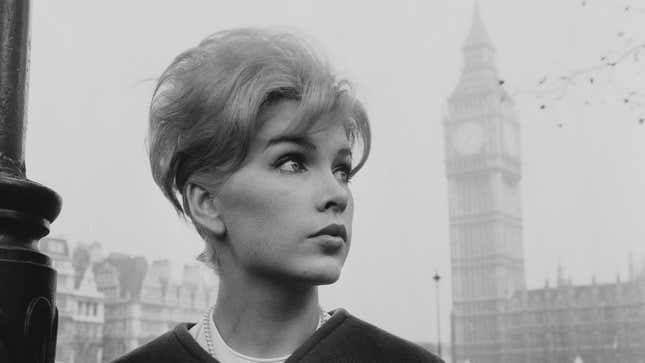
Stella Stevens began her career as a model, and was featured as a Playboy centerfold in January 1960. According to Deadline, she was discovered in her hometown of Memphis and brought on for a screen test at 20th Century Fox before contracting with Paramount and later Columbia. She received a Golden Globe for Most Promising Newcomer for her first role, the 1959 film Say One For Me, also appearing in Li’l Abner that same year.
Throughout the 1960s, Stevens appeared in films alongside some of Hollywood’s most notable leading men, including Bobby Darin in John Cassavetes’ Too Late Blues, Elvis in Girls! Girls! Girls!, and Dean Martin in How to Save a Marriage And Ruin Your Life. Most notably, she starred opposite Jerry Lewis in 1963’s The Nutty Professor, a film that was selected for the United States National Film Registry by the Library of Congress in 2004.
She continued to work steadily throughout the ’70s and ’80s in both film and television. Her most notable credit of that period was The Poseidon Adventure with Ernest Borgnine, Gene Hackman, Shelley Winters, and more. The film was among the highest-grossing of its time and was nominated for eight Academy Awards. [Mary Kate Carr]
23 / 72
Jansen Panettiere
Jansen Panettiere
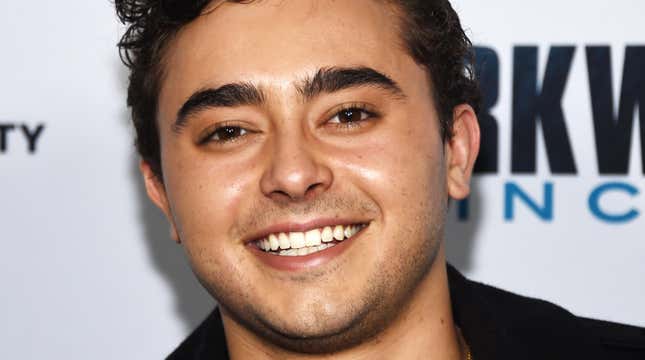
Born September 25, 1994, in Palisades, New York, to former soap opera actor Lesley Vogel and lieutenant firefighter Alan “Skip” Panettiere, Jansen Panettiere made his acting debut in the year 2000. Just six years old, he found early success on children’s television, appearing on Even Stevens, Blue’s Clues, and the Disney Channel Original Movie Tiger Cruise, opposite his sister and Bill Pullman. He also guest starred on an episode of the sitcom Everybody Hates Chris. Panettiere was nominated for a 2008 Young Artist Award for the Nickelodeon original movie The Last Day Of Summer.
Throughout the 2000s, he became a working voice actor, with credits including Racing Stripes, Robots, and Ice Age: The Meltdown. In 2005, he landed a starring role on the Nickelodeon animated series The X’s, playing Truman X.
Panettiere kept working consistently during the 2010s, acting on Major Crimes and The Walking Dead. He also appeared in The Forger, a 2012 thriller starring Alfred Molina and Lauren Bacall, and MTV’s How High 2. His final roles were in 2021’s Bart Bagalzby And The Garbage Genie and 2022’s Love And Love Not. [Sam Barsanti]
24 / 72
Burny Mattinson
Burny Mattinson
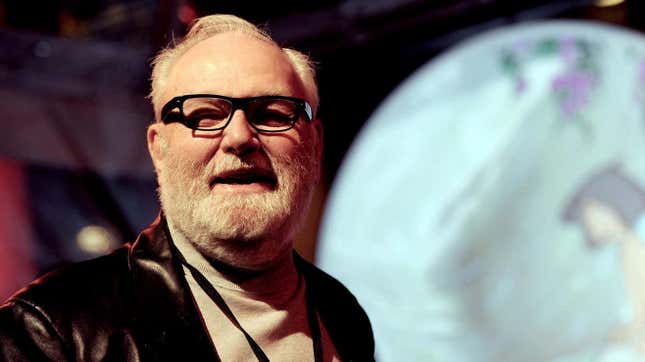
Making his way through Disney, Mattison spent the 60s working on classic projects as an assistant to one of Walt’s Nine Old Men, Eric Larson, working on Mary Poppins, The Sword In The Stone, and The Jungle Book. His roles varied in the late-70s when he began working on Pete’s Dragon, The Fox And The Hound, and The Rescuers. In 1983, Mattinson directed his first short, which has since become a holiday classic: Mickey’s Christmas Carol. Elaborating on a knack for English mice in foggy London town, he followed with The Great Mouse Detective, serving as co-director alongside John Musker, Ron Clements, and Dave Michener.
Mattinson spent the 90s as a storyboard artist during the Disney renaissance, with credits on The Lion King, Pocahontas, Mulan, and Beauty And The Beast. Disney named him a Disney Legend in 2008, and he continued to serve as a story supervisor throughout the 2000s and was credited as a story artist on Big Hero 6 and 2022’s Strange World. On March 5, 2018, he broke the castmember longevity record. [Matt Schimkowitz]
25 / 72
Ricou Browning
Ricou Browning
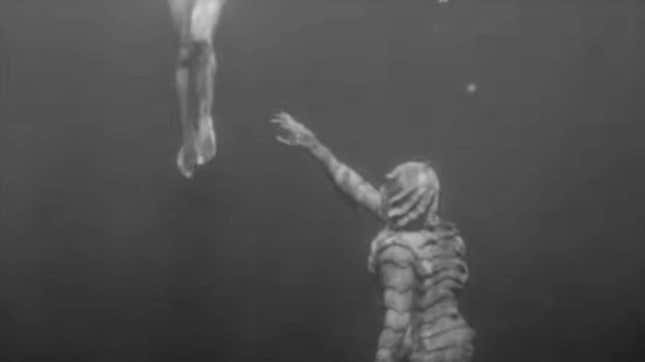
Ricou Browning, an actor, director, and cinematographer with a very specific speciality, has died. Browning was best known for doing underwater stunts, most famously in 1954’s Creature From The Black LagoonThe Hollywood Reporter says that Browning died at his home in Florida from natural causes, with his family saying in a statement that he “had a fabulous career in the film industry, providing wonderful entertainment for past and future generations.” Browning was 93. [Sam Barsanti]
26 / 72
Steve Mackey
Steve Mackey
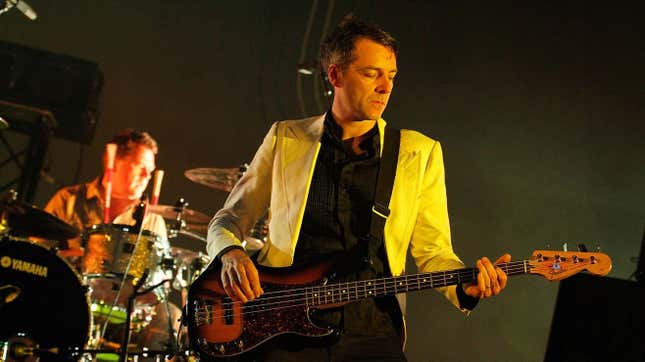
English musician and music producer Steve Mackey, best known as the bassist for Pulp, has died at 56 from an undisclosed illness. The news was shared from the seminal Britpop band’s Instagram account with the caption, “Safe travels, Steve. We hope to catch up with you one day.”
Known for its ’70s-inspired style and pointed social commentary, Pulp made its mark on the era with the 1995 album Different Class, featuring the hit songs “Common People” and “Sorted For E’s & Wizz.” Following the release of the band’s final album We Love Life in 2001, Mackey remained a close collaborator with singer Jarvis Cocker. The two made cameo appearances alongside Radiohead’s Jonny Greenwood and Phil Selway in Harry Potter And The Goblet Of Fire, and Mackey worked on Cocker’s solo albums Jarvis and Further Complications. As a producer, he also hit the studio with artists including M.I.A., the Long Blondes, and Florence + the Machine. [Katie Chow]
27 / 72
Tom Sizemore
Tom Sizemore
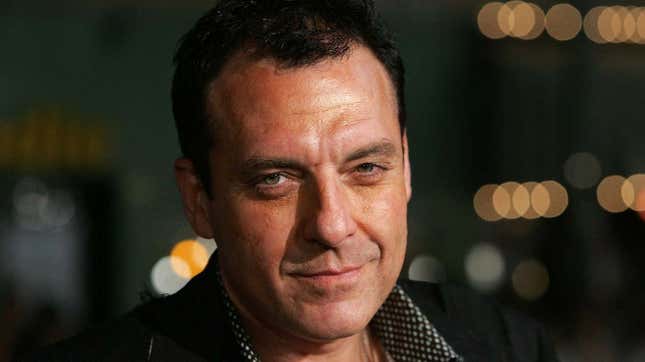
Sizemore began his career in 1989, most prominently playing a small part in Oliver Stone’s Born On The Fourth Of July. He went on to appear in films like Harley Davidson And The Marlboro Man, True Romance, Heat, Pearl Harbor, and many more. On television, he had roles in Robbery Homicide Division, Entourage, It’s Always Sunny In Philadelphia, Shooter, and, perhaps most notably,
28 / 72
Gary Rossington
Gary Rossington
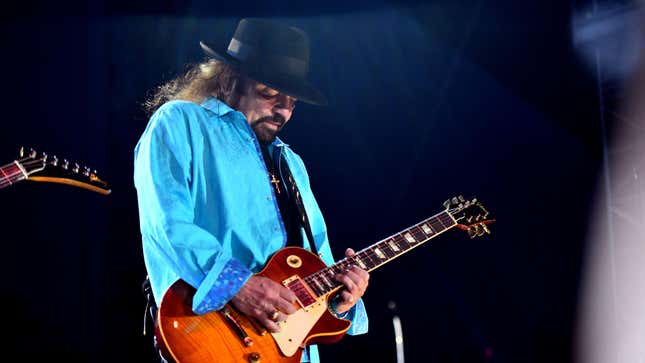
Although the band offered no official cause of death, Gary Rossington had struggled with his heart in recent years, undergoing emergency heart surgery in 2021 in the midst of the group’s Big Wheels Keep on Turnin’ Tour.
Heart surgery wasn’t Rossington’s first brush with mortality. In 1977, just three days after the release of “Street Survivors,” he survived a plane crash that killed fellow band members Ronnie Van Zant and Steve Gaines. Backup singer Cassie Gaines (Steve’s sister), road manager Dean Kilpatrick, and both pilots also lost their lives. In the wake of the tragedy, the band disbanded for a decade before reuniting for a 1987 tribute tour.
Rossington, Van Zant, and Bob Burns founded Lynyrd Skynyrd in 1964. Per the band’s website, the trio met while competing on rival baseball teams. After adding guitarist Allen Collins and bassist Larry Junstrom to the mix, the group shuffled through various names before settling on Lynyrd Skynyrd in 1969.
The rest was history. A Rock ‘N Roll Hall Of Fame member since 2006, Rossington contributed to some of Lynyrd Skynyrd’s most enduring tracks, including “Sweet Home Alabama” and “Free Bird.” Through his aforementioned family and his contributions to rock history, despite his passing, Rossington’s legacy shows no signs of disappearing. [Hattie Lindert]
29 / 72
Chaim Topol
Chaim Topol
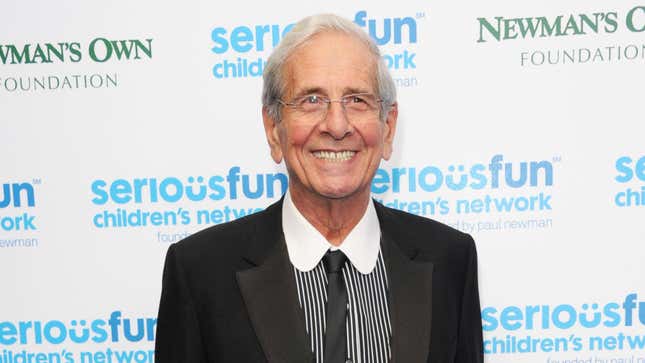
One of Israel’s most decorated actors of all time, Topol’s accolades include two Golden Globe awards and nominations for both an Academy Award and a Tony Award. In 2015, Topol was honored with Israel’s most prestigious honor, the Israel Prize for lifetime achievement, for his contributions to the country’s cultural record. In the wake of his death, Israeli Prime Minister Benjamin Netanyahu said Topol’s “contribution to Israeli culture will continue to exist for generations,” and Israel’s ceremonial president Isaac Herzog emphasized how Topol “filled the movie screens with his presence and above all entered deep into our hearts.”
Born September 9, 1935, Topol got his start in acting in the 1950s as part of a theatre troupe in the Israeli army; around the same time he met his wife, Galia, to whom he remained married until his passing. His first major role was in the 1964 Israeli hit Sallah Shabati—the film became the first Israeli film ever to earn an Academy Award nomination and also gave Topol his first Golden Globe Award. From there, it only took two years for Topol to make his English language film debut alongside Kirk Douglas in 1966's Cast a Giant Shadow.
The role of Topol’s career, however, was Tevye, the Jewish father at the center of Fiddler On The Roof, who embodies a generational struggle to maintain tradition while welcoming change in his Russian shtetl, all against the backdrop of the rise of early-1900's anti-Jewish sentiment in the country.
After performing as Tevye for years on stages from London to Broadway, Topol was cast in the 1971 film adaptation. Although he was only 35 years old at the time, Topol powerfully embodied Tevye’s whimsical gruffness and dedication to legacy. Translating seamlessly from stage to screen, the performance was a tour-de-force, winning Topol a Golden Globe. He was also nominated for Best Actor at the 44th Annual Academy Awards in 1972 but lost out to The French Connection star Gene Hackman. [Hattie Lindert]
30 / 72
Rolly Crump
Rolly Crump

Roland “Rolly” Crump, a longtime Disneyland Imagineer who was instrumental in the designs of fan-favorite attractions such as the Haunted Mansion, Enchanted Tiki Room, and It’s A Small World, has died. The announcement comes via the Facebook page for his autobiography, It’s Kind Of A Cute Story. Crump was 93.
Crump’s Disney career spanned over 40 years and began in 1952—when he was just 22 years old—as an animation assistant on films such as Peter Pan, Lady And The Tramp, Sleeping Beauty, and 101 Dalmatians. [Emma Keates]
31 / 72
Lance Reddick
Lance Reddick
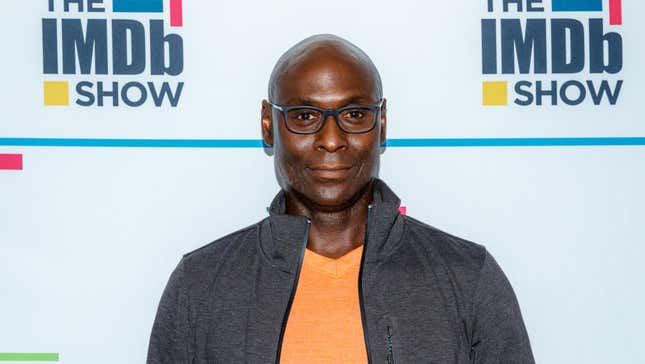
Lance Reddick was born in Baltimore, Maryland, the eventual setting of one of his breakout roles as Lieutenant Cedric Daniels on The Wire. He attended Yale School of Drama, and included among his early credits are roles in Alfonso Cuarón’s 1998 adaptation of Great Expectations and the groundbreaking HBO prison drama Oz.
He continued a prolific television career after five seasons on The Wire, most notably appearing as Phillip Broyles on Fringe, the stoic division leader and mentor to Anna Torv’s Agent Olivia Dunham, and Chief of Police Irvin Irving on Bosch. Reddick also appeared in a number of high-profile films, including, among others, White House Down, Godzilla Vs. Kong, and of course all four John Wick films as the mysterious hotel concierge Charon.
While he often played intimidating, authoritative characters in dramas, the star also used his persona to great effect in comedy, as in the satirical Comedy Central series Corporate and in appearances such as Key And PeeleTim & Eric’s Bedtime Stories. With his rich, distinctive voice, he was also a natural fit for voiceover work in both television and video games, with credits ranging from Destiny 2 to The Legend Of Vox Machina.
32 / 72
Norman Steinberg
Norman Steinberg
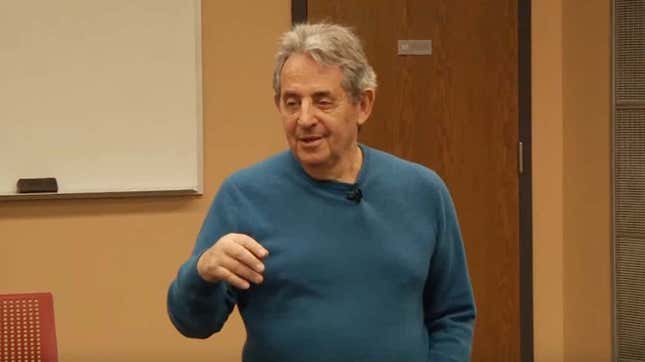
More television followed until Brooks again came calling. Brooks was starting work on a script by University of Wisconsin student Andrew Bergman entitled Tex X, a western comedy that Steinberg found “funny as hell” but needed work. The movie was Blazing Saddles, one of the era’s most influential and beloved comedies, but Steinberg had to convince Brooks they were on to something.
“The day that Mel showed the film to Warner Bros. — he came back to the office, he was ashen,” said Steinberg. “He said they didn’t laugh once. He said ‘I’m going to re-cut the film.’ Andy [Bergman] and I begged him to wait until the screening we had that night with all the Warner office workers. And they went bat shit, and it never changed. People were falling on the floor — because it was so outrageous at the time. And Mel said ‘Fuck ’em this is our film,’ and that was the film that was released.” [Matt Schimkowitz]
33 / 72
Brian “Brizz” Gillis
Brian “Brizz” Gillis
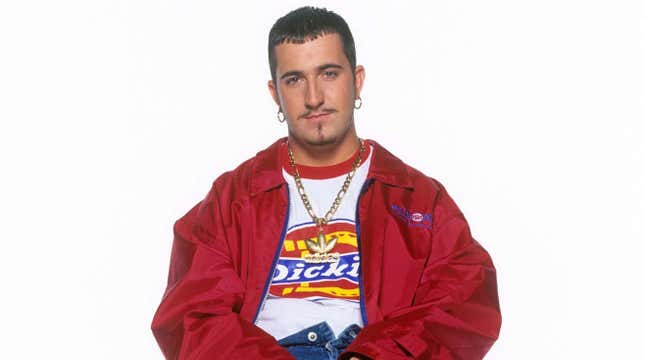
Brian “Brizz” Gillis, founding member of ’90s boy band LFO, has died at age 47. Former bandmate Brad Fischetti, the last living member of the group, broke the news to Instagram on Thursday; sources close to Gillis later confirmed his death to Variety.
LFO, known for their hits “Summer Girl” and “Girl on TV,” was started by Fischetti and Rich Cronin in Massachusetts in 1995. They were introduced to Gillis by notorious boy band mogul Lou Pearlman, who signed them to his Transcontinental Records label as a trio, per Rolling Stone. Gillis left the band in 1999 and was replaced by Devin Lima, after which the band would go on to achieve its biggest successes. However, Fischetti shared in his post that “If it wasn’t for [Gillis’] hard work and dedication in the early days of LFO, the first two chapters, the LFO you came to know and (hopefully) love would not exist.” [Mary Kate Carr]
34 / 72
